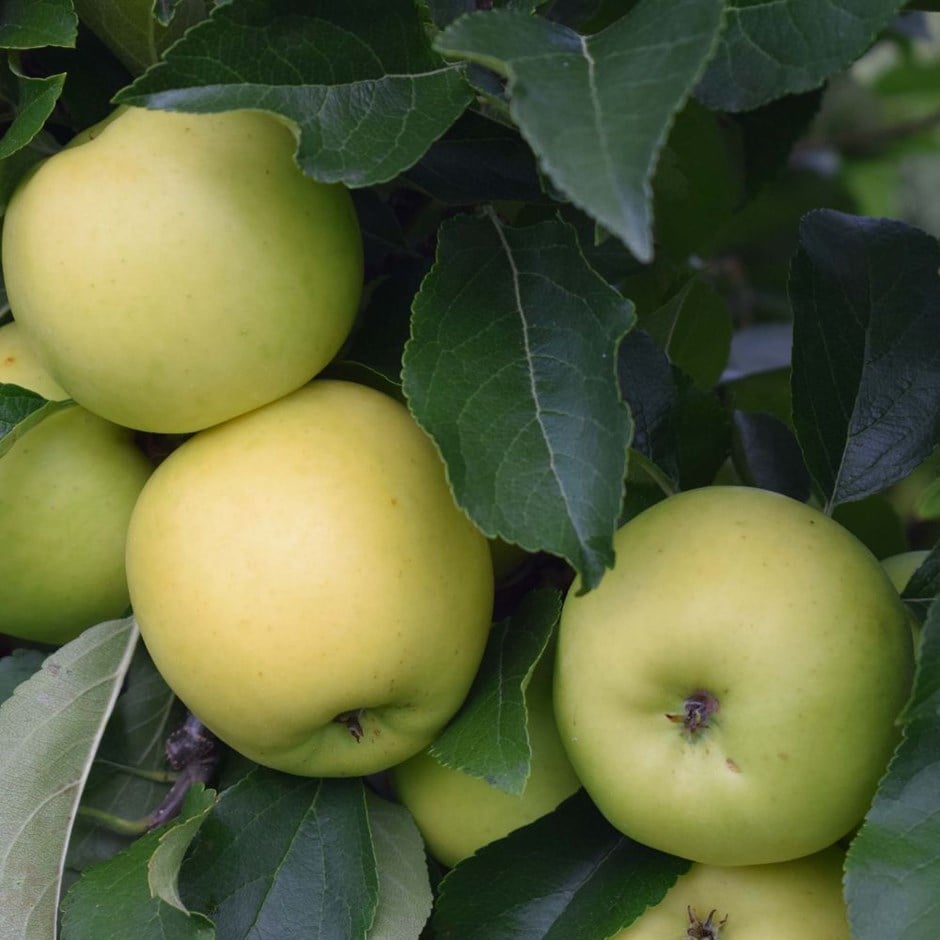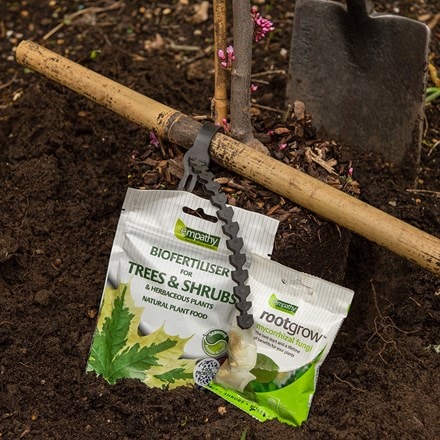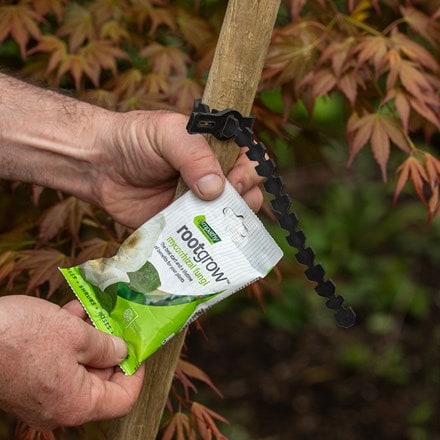apple 'Greensleeves' (PBR)
eating / dessert apple ( syn. Malus 'Greensleeves' )
- 9 litre pot | M26 root stock | 1.8m
- £46.74 £54.99
- In stock (shipped within 3-5 working days)
- bare root | M26 root stock | 1.2m tall
- £26.99
- available to order from autumn
- bare root | MM106 root stock | 1.2m tall
- £44.99
- available to order from autumn
Delivery options
- Standard £12.99
- Position: full sun
- Soil: moderately fertile, moist but well-drained soil
- Rate of growth: average
- Flowering period: April to May
- Hardiness: fully hardy
- Garden care:When planting your apple tree, prepare a hole up to three times the diameter of its root system. Fork over the base of the pit in readiness, incorporating plenty of organic matter into the backfill and planting hole. Place the plant in the planting hole and carefully refill, firming the soil around the roots to eliminate air pockets. Insert stake at this point if required.
Avoiding frozen and waterlogged soil, trees should be planted out as they arrive. If you've ordered a bare root tree, soak the roots in a bucket of water for half an hour prior to planting - or if this is not possible, they can be heeled in temporarily, covering their roots with soil, or potted up.
Keep the base of the tree weed free, fertilise at the beginning of each year water regularly during hot, dry spells.
The main prune should be done in the winter as long as it isn't frosty or freezing. Take out the 3D’s (dead, dying and diseased wood) and create an open shape. Then reduce the leaders back by a third. Aim to create an airy structure without any crisscrossing branches.
In August summer prune. Shorten any side shoots (or laterals) which are longer than 20cm back to three leaves. This will allow the sun to ripen the fruit and encourage more fruit buds. Make sure that the growth you’re cutting away feels firm to the touch.
Fruiting very early in life and suitable for container growing, 'Greensleeves' is a dessert cultivar with heavy, regular crops of pale green, turning pale yellow, skinned apples with a crisp flesh that becomes sweeter.
The blossom has some frost resistance, making it ideal for colder areas, and the plant is a reliable cropper if planted alongside other varieties in pollinating group 3 such as ‘Katy’, ‘Braeburn’ or ‘Cox’s Orange Pippin’.
Pollination information: This apple belongs to pollination group 3, so you will need to plant one other different variety of apple to guarantee cross-pollination, and a subsequent bumper crop. Ideally this should come from the same pollination group, however it is possible to use one from group 2 or 4 as well.
The blossom has some frost resistance, making it ideal for colder areas, and the plant is a reliable cropper if planted alongside other varieties in pollinating group 3 such as ‘Katy’, ‘Braeburn’ or ‘Cox’s Orange Pippin’.
Pollination information: This apple belongs to pollination group 3, so you will need to plant one other different variety of apple to guarantee cross-pollination, and a subsequent bumper crop. Ideally this should come from the same pollination group, however it is possible to use one from group 2 or 4 as well.




